Next up for read noise analysis is the Nikon D800E. Unlike the D810, the D800E and the D800 subtract out the black point before they write the raw file, so we won’t get a crystal clear picture of the read noise from a dark-field exposure, but, as we saw with the Leica M240 yesterday, we can see enough to make some judgements.
Here are curves with one-dimensional averaging with various kernel sizes in both the horizontal and vertical directions:
If we correct for the gain of the amplifiers that precede the analog-to-digital converters (ADCs), we get there curves:
You can see that the curves with the vertical averaging level out sooner than those with horizontal averaging, indicating that the middle-frequency read noise of the D800E is primarily in the horizontal direction.
Note that the read noise numbers are lower than you’ve seen elsewhere. That’s because those devil-may-care Nikon engineers subtracted out the black point before they wrote the raw files. At least they didn’t artificially suppress the black point like the Leica folks.
If the read noise were white Gaussian noise, this is what the sensor-referred curves would look like:
If we divide the actual sensor-referred curves by the ideal ones, we get the following two curve sets:
Ignore the “Electrons” label in the above graph; the vertical axis is dimensionless.
The D800E exhibits good-to-midpack performance for the low-frequency content of its read noise.
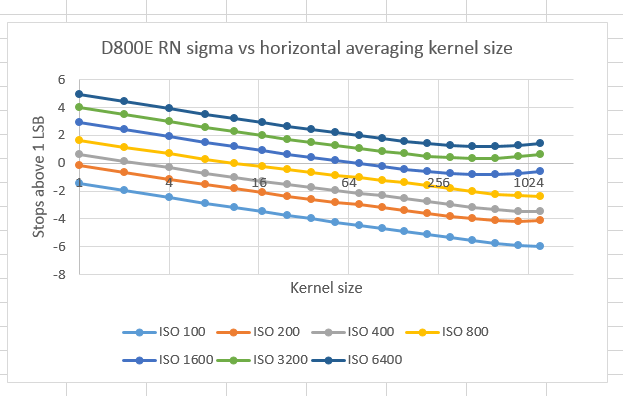
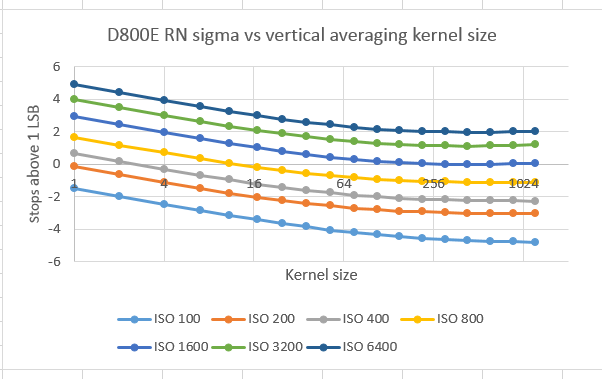
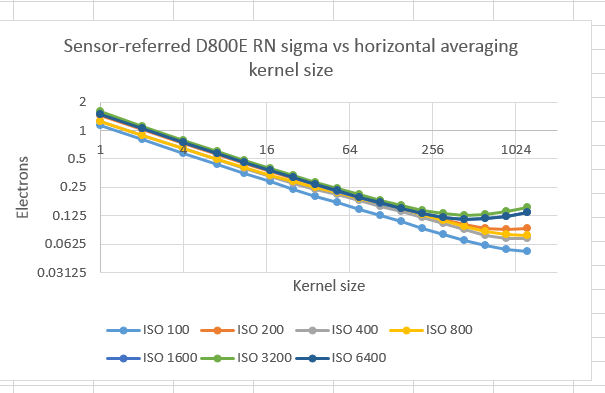
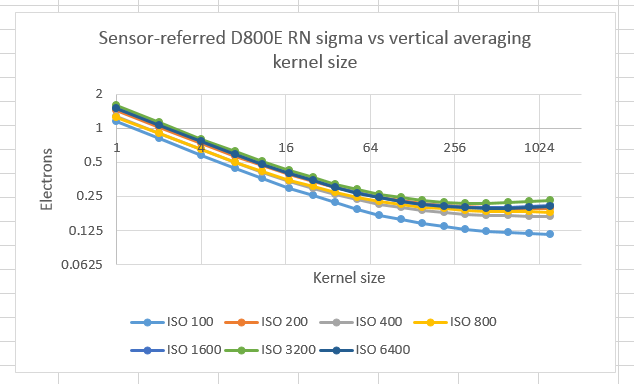
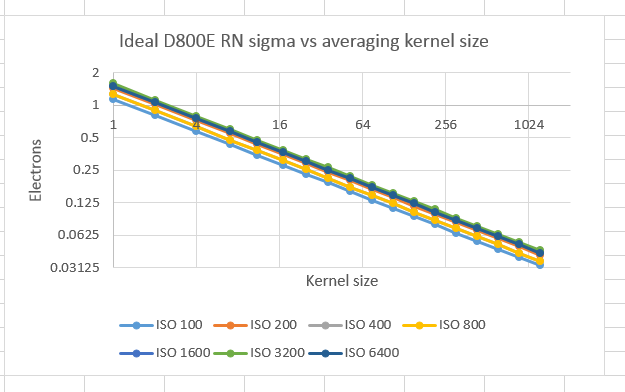
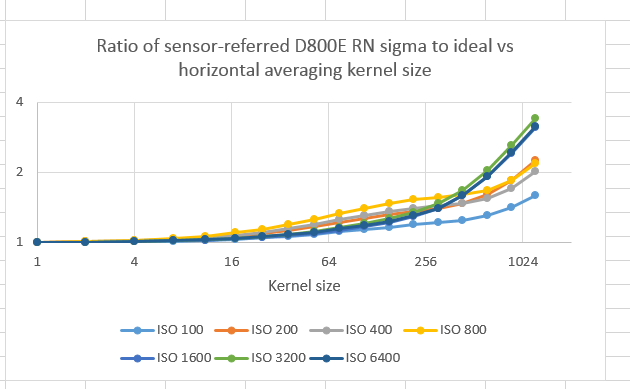
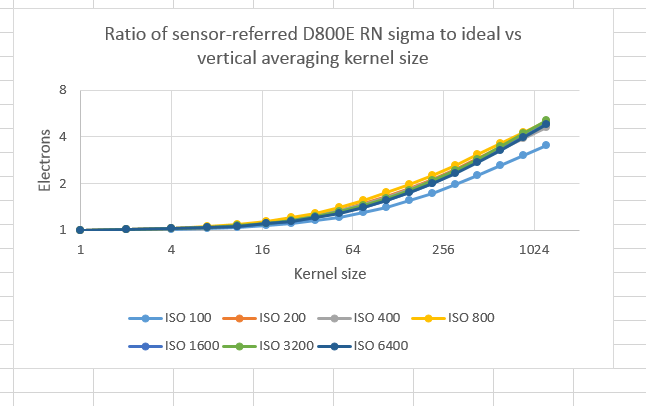
Leave a Reply